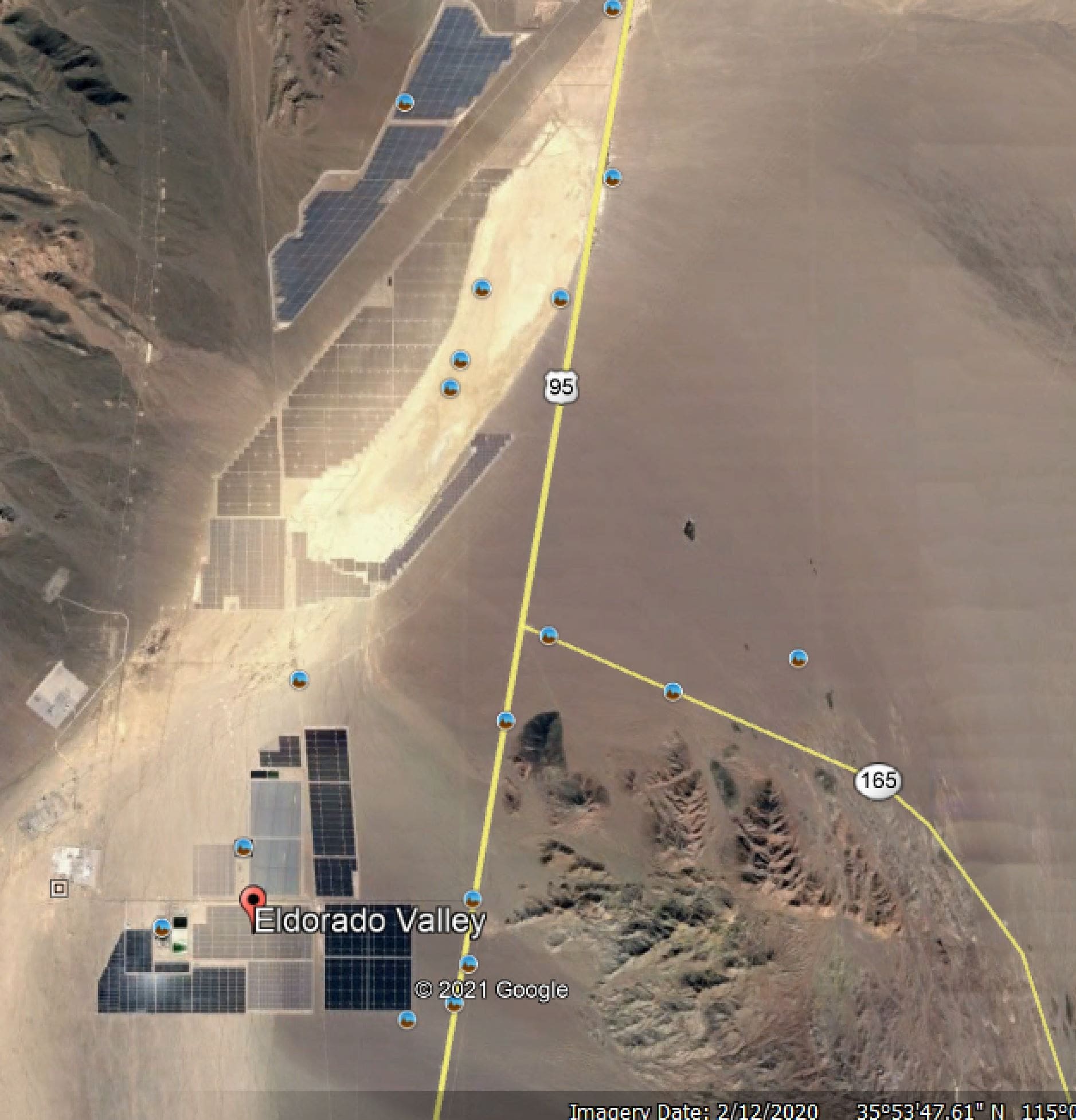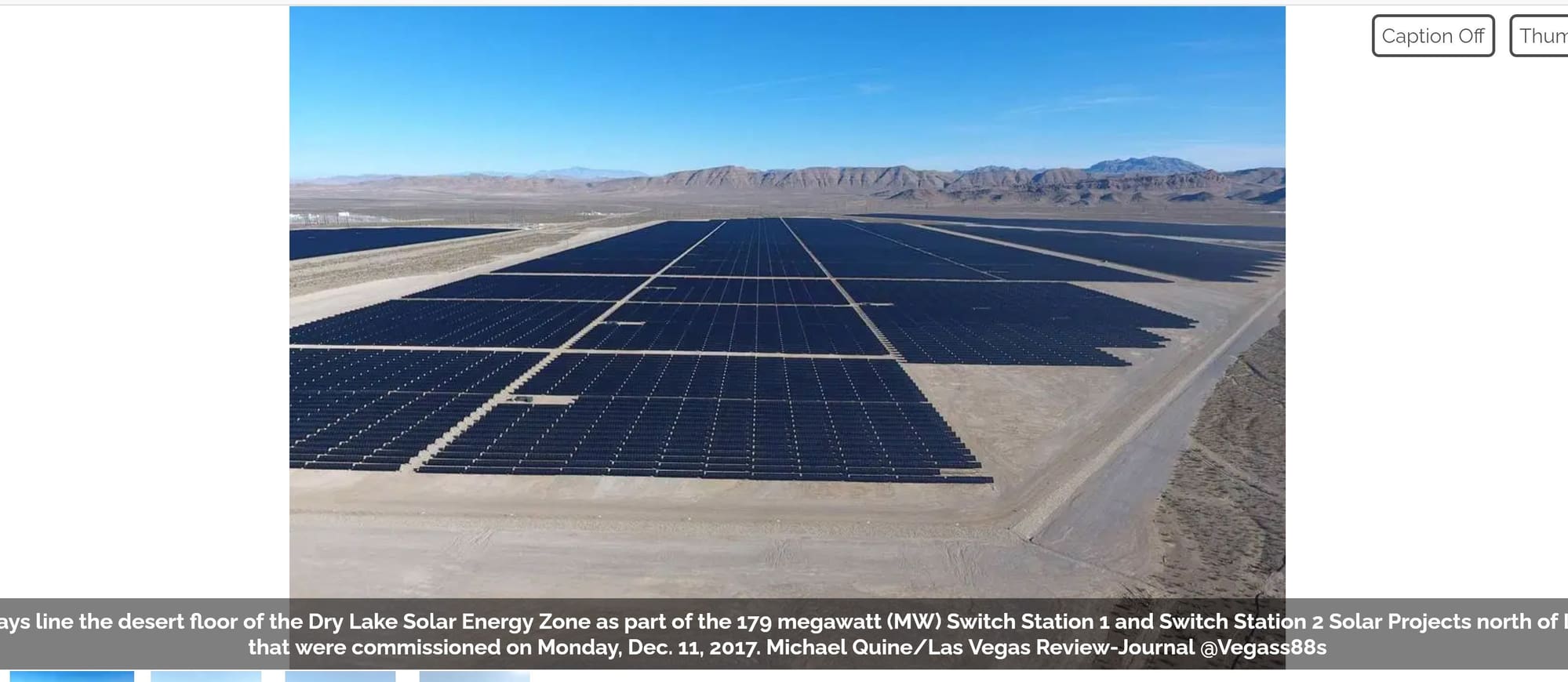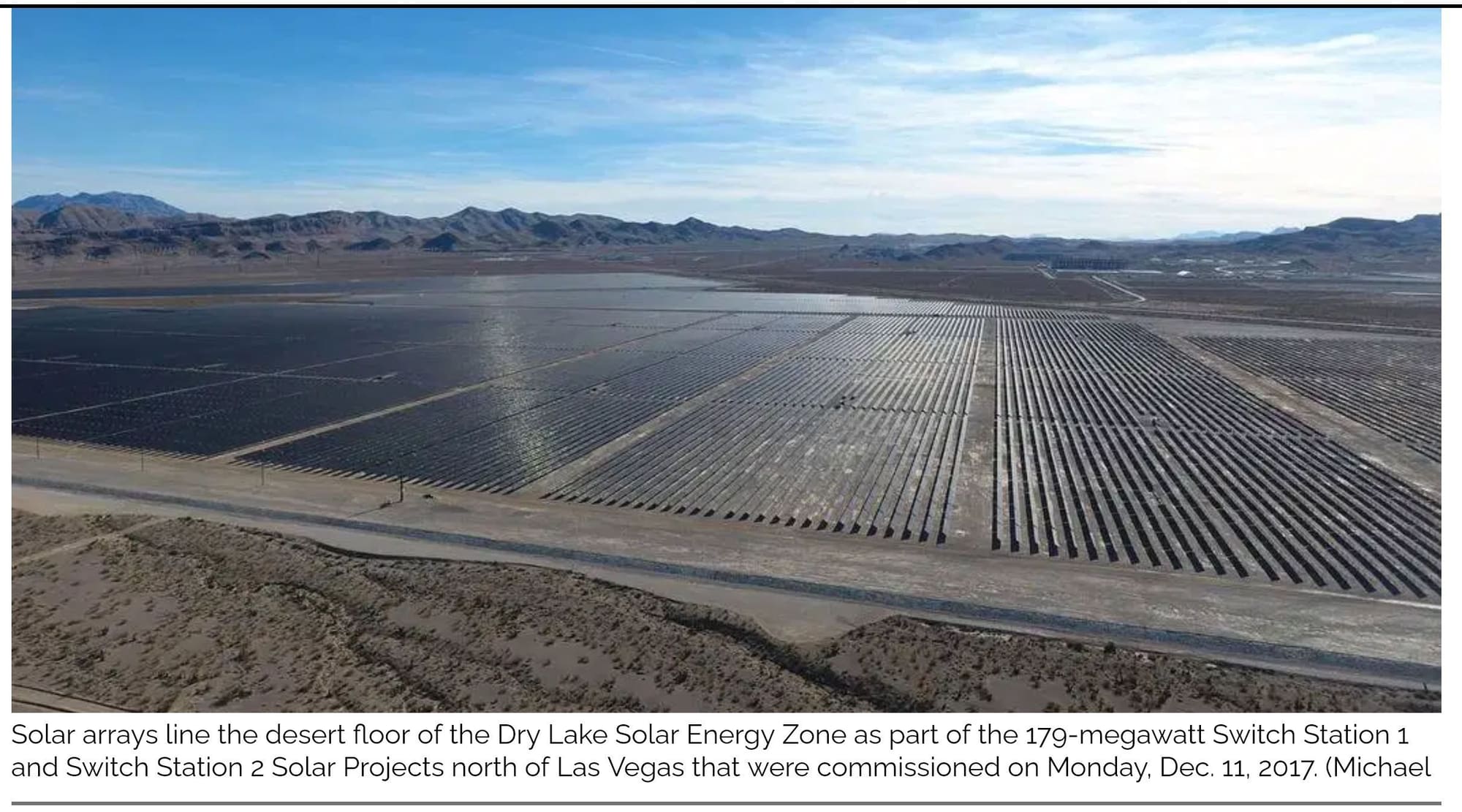F150 Lightning
#811
But you are missing the point there, you are not just getting your money back, you are then getting zero cost electric for the life of the system. And past that, replacing panels, inverts etc is cheap, as all of the cabling and mounting is done
Its reasonable to assume your panels and inverters will last at least 30 years, given that's the warranty terms of most stuff like this. If your payoff is 10 years, you then have 20 years at least of free electric PLUS a check every month for any excess. That excess could also give you as ton of extra money as if inflation and/or the cost of electric increases, you are getting that money in your pocket. The solar is already paid for
I can't think of any investment that will give me that level of returns, and I doubt you can either
Its reasonable to assume your panels and inverters will last at least 30 years, given that's the warranty terms of most stuff like this. If your payoff is 10 years, you then have 20 years at least of free electric PLUS a check every month for any excess. That excess could also give you as ton of extra money as if inflation and/or the cost of electric increases, you are getting that money in your pocket. The solar is already paid for
I can't think of any investment that will give me that level of returns, and I doubt you can either
Itís funny how you consistently miss the obvious. On the Front Page of that very same 6/5 WSJ is an extensive article describing the environmental conflicts between your pet darling: renewable power development in the SW and, in particular, Nevada. There goes your dream.
The article emphasizes the conflict among environmentalists about renewables. Whether one considers themselves an environmentalist or not our country is not going to tolerate the environmental devastation caused by deployment of this stuff.
There is no source of new power in sight to serve expansion of an EV fleet.
But you are right, the Lightning may be a useful power reservoir as our lights blink off more regularly due to the nonsense. But do you think owners will benevolently backfeed the grid during power outages, or keep it for their own consumption? Really?
The article emphasizes the conflict among environmentalists about renewables. Whether one considers themselves an environmentalist or not our country is not going to tolerate the environmental devastation caused by deployment of this stuff.
There is no source of new power in sight to serve expansion of an EV fleet.
But you are right, the Lightning may be a useful power reservoir as our lights blink off more regularly due to the nonsense. But do you think owners will benevolently backfeed the grid during power outages, or keep it for their own consumption? Really?
#812
But you are missing the point there, you are not just getting your money back, you are then getting zero cost electric for the life of the system. And past that, replacing panels, inverts etc is cheap, as all of the cabling and mounting is done
Its reasonable to assume your panels and inverters will last at least 30 years, given that's the warranty terms of most stuff like this. If your payoff is 10 years, you then have 20 years at least of free electric PLUS a check every month for any excess. That excess could also give you as ton of extra money as if inflation and/or the cost of electric increases, you are getting that money in your pocket. The solar is already paid for
I can't think of any investment that will give me that level of returns, and I doubt you can either
Its reasonable to assume your panels and inverters will last at least 30 years, given that's the warranty terms of most stuff like this. If your payoff is 10 years, you then have 20 years at least of free electric PLUS a check every month for any excess. That excess could also give you as ton of extra money as if inflation and/or the cost of electric increases, you are getting that money in your pocket. The solar is already paid for
I can't think of any investment that will give me that level of returns, and I doubt you can either
It’s funny how you consistently miss the obvious. On the Front Page of that very same 6/5 WSJ is an extensive article describing the environmental conflicts between your pet darling: renewable power development in the SW and, in particular, Nevada. There goes your dream.
The article emphasizes the conflict among environmentalists about renewables. Whether one considers themselves an environmentalist or not our country is not going to tolerate the environmental devastation caused by deployment of this stuff.
The article emphasizes the conflict among environmentalists about renewables. Whether one considers themselves an environmentalist or not our country is not going to tolerate the environmental devastation caused by deployment of this stuff.
Agreed. There is no perfect environmental solution. But, moving to renewables is more of a one time investment (assuming we can develop good battery recycling), while fossil fuels is an ongong environmental impact.
There is no source of new power in sight to serve expansion of an EV fleet.[California].. projects that electric vehicles will consume 5.4% of the state’s electricity, or 17,000 gigawatt-hours, by 2030.
This is certainly doable. However, the timing of vehicle charging and/or the last mile power delivery will be a constraint.
But you are right, the Lightning may be a useful power reservoir as our lights blink off more regularly due to the nonsense. But do you think owners will benevolently backfeed the grid during power outages, or keep it for their own consumption? Really?This is certainly doable. However, the timing of vehicle charging and/or the last mile power delivery will be a constraint.
If the power companies are paying anything near to what the Texas power companies paid during the outage ($9/hwh), I think many will take the $$$ and huddle by the fire. That's almost $2k of power in a fully charged Rivian. At the very least, we will likely see less demand as vehicle owners use power from their vehicles instead of paying $$$$ to the utility, which will reduce the energy impact of severe events.
Last edited by Krakken; 06-06-2021 at 03:12 PM.
#813
Member
I'm not here to argue or validate your views nor to force mine upon you as well.
The EV subject matter has been debated at nauseam. Everything from the electrical grid to home charging to precisely what you describe...longer road trips.
Theres one generation that refuses to accept them as the future and another generation that insists on them.
Whether you or I like them, dislike them, or what have you they are coming.
Numerous jurisdictions and countries have mandated solely EV use in near future years.
Oil is becoming an obsolete commodity!
EVs will never match ICEs...they will eventually far surpass them.
When the automobile was invented, there were no roadways to drive on.
Compare then to now...both in terms of infrastructure and vehicle technologies.
The EV subject matter has been debated at nauseam. Everything from the electrical grid to home charging to precisely what you describe...longer road trips.
Theres one generation that refuses to accept them as the future and another generation that insists on them.
Whether you or I like them, dislike them, or what have you they are coming.
Numerous jurisdictions and countries have mandated solely EV use in near future years.
Oil is becoming an obsolete commodity!
EVs will never match ICEs...they will eventually far surpass them.
When the automobile was invented, there were no roadways to drive on.
Compare then to now...both in terms of infrastructure and vehicle technologies.
Last edited by Bob Reynolds; 06-06-2021 at 03:08 PM.
#815
Member
Less than 10% of US power is from wind and solar and reliable and responsive backup, usually natural gas, is required to backfill at night and when the wind isn't blowing. Nuclear is really the only viable replacement for fossil fuels but is politically verboten at this time. Something else might replace fossil fuels but it won't be wind and solar.
#816
...which is another reason electric vehicles are great as they can flatten the "duck curve" for electricity demand and take better advantage of intermittent power sources.
https://scitechdaily.com/smoothing-o...grid-planning/
No need for nuclear - even if 100% of US vehicles are electric, that will "only" increase electricity generation demand by 30-40% which is certainly possible with existing generation trends in the next 10 years.
The real issue that needs to be addressed, both by smart metering and distribution updates, is last mile power demand. Electric vehicles cannot all change at the same time without some power management / local distribution solution.
https://scitechdaily.com/smoothing-o...grid-planning/
No need for nuclear - even if 100% of US vehicles are electric, that will "only" increase electricity generation demand by 30-40% which is certainly possible with existing generation trends in the next 10 years.
The real issue that needs to be addressed, both by smart metering and distribution updates, is last mile power demand. Electric vehicles cannot all change at the same time without some power management / local distribution solution.
Last edited by Krakken; 06-06-2021 at 03:24 PM.
#817
Member
To manage power distribution in any reasonable way other than rationing, you have to have the power in the first place and that just isn't going to happen with wind and solar. As for nuclear, there certainly will be a need for it if any real effort is actually made to phase out fossil fuel generation, something I predict will only be happening in the minds of politicians and green energy devotees for the foreseeable future.
#819
Senior Member
Itís funny how you consistently miss the obvious. On the Front Page of that very same 6/5 WSJ is an extensive article describing the environmental conflicts between your pet darling: renewable power development in the SW and, in particular, Nevada. There goes your dream.
And our local paper has stories about how the conflicts are resolved. For example, in 2014, one solar power field hired hundreds of people for a Saturday, had them walk side by side over the build site, and picked up and moved every desert tortoise they found. Problem solved.
I've personally seen this repeated dozens of times, and the end result has always been the pictures below. And that is why you can charge your BEV at home in Las Vegas for 5 cents a kw. See Post # 504 for the proof.
And for the so-called "The grid can't handle it" whiners, please, please see Post #740 for proof of how wrong they are.
Yes, if 50% of our vehicles turned into BEV's overnight, the grid would get overloaded. Do you expect that to happen soon? Of course not.
Every time I take a road trip, in any direction, I see new solar collector fields popping up.
Eldorado Valley solar collectors are within sight of casinos . Google earth does not show distance, but the pic shows MILES of collectors. And that is what drives fossil fuel people nuts. Those collectors are converting the FREE solar energy provided by the sun into megawatts of usable electricity. With no emissions, and no fuel costs.





The following users liked this post:
Krakken (06-06-2021)
#820
To manage power distribution in any reasonable way other than rationing, you have to have the power in the first place and that just isn't going to happen with wind and solar. As for nuclear, there certainly will be a need for it if any real effort is actually made to phase out fossil fuel generation, something I predict will only be happening in the minds of politicians and green energy devotees for the foreseeable future.
https://www.eia.gov/todayinenergy/detail.php?id=46676

In its Annual Energy Outlook 2021 (AEO2021), the U.S. Energy Information Administration (EIA) projects that the share of renewables in the U.S. electricity generation mix will increase from 21% in 2020 to 42% in 2050. Wind and solar generation are responsible for most of that growth. The renewable share is projected to increase as nuclear and coal-fired generation decrease and the natural gas-fired generation share remains relatively constant. By 2030, renewables will collectively surpass natural gas to be the predominant source of generation in the United States. Solar electric generation (which includes photovoltaic (PV) and thermal technologies and both small-scale and utility-scale installations) will surpass wind energy by 2040 as the largest source of renewable generation in the United States.
The following 2 users liked this post by Krakken:
All Hat No Cattle (06-06-2021),
SteelHouse (06-07-2021)



